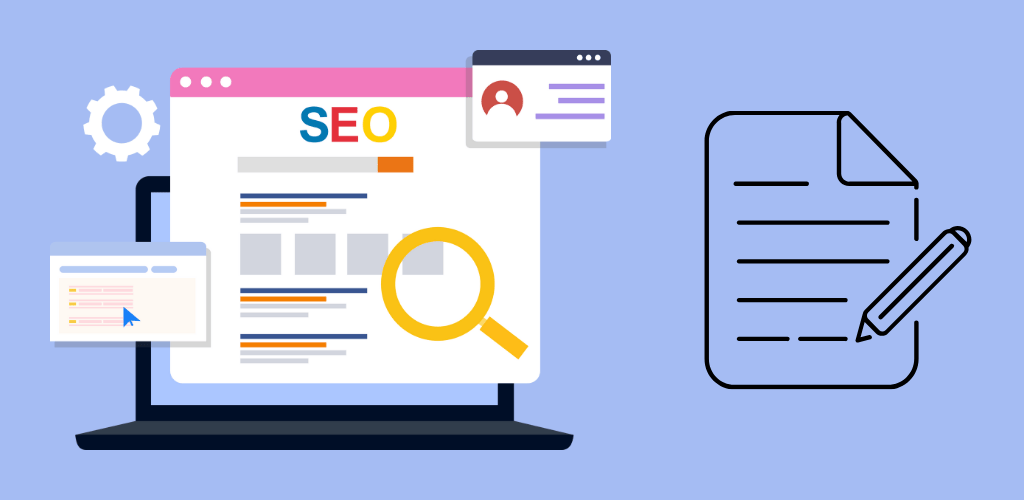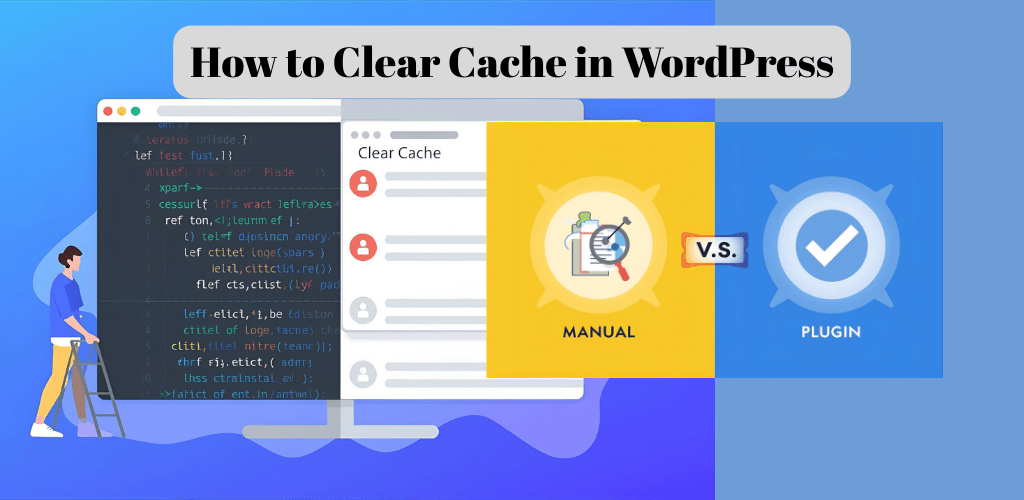You’re watching your visitors bounce faster than a cat on a hot tin roof, aren’t you? All that traffic, zero conversions. Frustrating doesn’t begin to cover it.
I’ve tested 17 on page SEO tools over the last six months so you don’t have to waste time on the duds. By the end of this post, you’ll know exactly which tools deliver real conversion boosts rather than just fancy reports.
Finding the right on page SEO tools can literally be the difference between page-one rankings and digital obscurity. The tools I’m about to show you helped one of my clients increase organic traffic by 143% in just 60 days.
But here’s what nobody’s talking about: the most expensive tools aren’t always the best performers. In fact, the tool that delivered my best results costs less than your weekly coffee budget…
Table of Contents
Understanding On Page SEO: The Foundation of Conversion Success

Key On-Page SEO Elements That Drive Conversions
On-page SEO isn’t just about ranking higher – it’s about turning those visitors into customers. And honestly, most people get this all wrong.
The difference between websites that convert at 1% and those hitting 5%+ often comes down to these critical elements:
- Strategic Keyword Placement: Not just any keywords, but the ones with buyer intent. Think “best protein powder for weight loss” versus just “protein powder.” Place these in your H1, first paragraph, and sprinkled naturally throughout your content.
- Compelling Meta Descriptions: These little snippets are basically free ads in search results. A good meta description increases click-through rates by up to 30% when you include benefits, not just features.
- Page Speed: Every second counts. Literally. A 1-second delay reduces conversions by 7%. Most SEO tools now include page speed analysis because it matters that much.
- Mobile Optimization: Over 60% of searches happen on mobile, but here’s the kicker – mobile conversion rates are typically lower. The gap between good and bad mobile experience is where money is left on the table.
- Content Readability: Nobody converts from content they can’t understand. Break up those walls of text with subheadings, bullets, and short paragraphs.
How Effective On Page SEO Tools Translate to Higher Conversion Rates
The right SEO tools don’t just save time – they uncover conversion opportunities you’d miss otherwise:
A basic SEO checker might tell you that your H1 needs a keyword. A conversion-focused SEO tool will tell you that your H1 lacks emotional triggers that drive action.
Here’s what the best tools actually do:
- Identify User Intent Gaps: They show which questions your audience is asking that your content isn’t answering – questions that, when addressed, remove obstacles to conversion.
- Analyze Competitor Conversion Elements: The advanced tools let you see not just what keywords competitors rank for, but what elements on their pages drive conversions.
- Heat Mapping Integration: The elite SEO tools now connect with heat mapping to show you exactly where users are engaging with your optimized content and where they’re dropping off.
The ROI of Investing in Quality SEO Tools
Nobody wants to throw money at tools that don’t deliver. But let’s talk real numbers:
The average small business spends $500-1000 monthly on SEO tools. For that investment to make sense, you only need to generate one additional sale for most businesses.
Consider this breakdown:
| SEO Tool Investment | Needed Monthly Conversion Increase | Typical Result |
|---|---|---|
| $100/month | 1-2 sales | 5-10 sales |
| $500/month | 5-10 sales | 15-30 sales |
| $1000+/month | 10-20 sales | 30-100+ sales |
The mistake? Most businesses focus on ranking improvements rather than conversion improvements. A proper SEO tool doesn’t just get you traffic – it gets you the right traffic and helps you convert it.
The businesses seeing 5-10x ROI from their SEO tools are using them to optimize for conversions, not just rankings.
Essential Features to Look for in On Page SEO Tools

A. Keyword Research and Analysis Capabilities
The backbone of any decent on-page SEO tool? Solid keyword research features. Without them, you’re basically throwing darts in the dark.
Look for tools that don’t just show you keywords, but reveal the full picture:
- Search volume data that’s actually accurate (not just ballpark figures)
- Keyword difficulty scores that make sense for YOUR website
- User intent analysis (because ranking for irrelevant keywords is pointless)
- Long-tail keyword suggestions (where the real conversion magic happens)
- Competitor keyword gap analysis (to find opportunities they’re exploiting)
The best tools show you exactly how people are searching, not just what they’re searching for. That context is golden when crafting content that converts.
B. Content Optimization Functionality
Having keywords is one thing. Knowing exactly how to use them? That’s where you separate the pros from the amateurs.
Your on-page SEO tool should offer:
- Real-time content scoring as you write
- Readability analysis that doesn’t just count syllables
- LSI keyword suggestions that sound natural
- Title tag and meta description optimization
- Smart recommendations for heading structure
- Word count targets based on what’s actually ranking
Avoid tools that turn you into a keyword-stuffing robot. The best ones balance SEO requirements with content that actually sounds human.
C. Technical SEO Audit Features
Content alone won’t cut it if your technical foundation is shaky. Good on-page tools should:
- Flag duplicate content issues before Google does
- Identify broken links and redirect chains
- Analyze page loading speed (and tell you how to fix it)
- Check schema markup implementation
- Validate canonical tags
- Monitor crawlability issues
I’ve seen countless “perfectly optimized” pages tank because of technical issues the writer never knew existed. Don’t be that person.
D. User Experience Metrics
Google’s watching how visitors interact with your site, and your tools should too:
- Bounce rate analysis by page and keyword
- Time on page metrics compared to industry benchmarks
- Click-through rate data from search results
- Scroll depth tracking (are people actually seeing your content?)
- Conversion path analysis
Remember: ranking #1 means nothing if visitors hit the back button immediately. The tools worth paying for connect SEO to actual user behavior.
E. Mobile Optimization Tools
More than half of all searches happen on mobile now. If your tool isn’t checking mobile performance, it’s living in 2010.
Essential mobile features include:
- Mobile rendering previews
- Touch element spacing analysis
- Font size and readability checks
- Mobile page speed insights
- Responsive design validation
The gap between desktop and mobile rankings grows wider every year. Your on-page SEO tool should treat mobile as the priority it is, not an afterthought.
Top Keyword Research Tools Compared

A. SEMrush: Comprehensive Keyword Intelligence
Finding the right keywords isn’t just nice-to-have—it’s the backbone of your SEO strategy. And when it comes to comprehensive keyword research, SEMrush is the heavyweight champion.
What makes SEMrush stand out? It’s not just about finding keywords; it’s about understanding their entire ecosystem. The tool shows you:
- Search volume (how many people are actually looking for this term)
- Keyword difficulty (can you realistically rank for this?)
- CPC data (how valuable is this traffic to advertisers?)
- Trend data (is this keyword growing or dying?)
But here’s where SEMrush really shines—it gives you the full competitive landscape. You see exactly who’s ranking for each keyword, what content they’re using, and where your gaps are.
I ran a test for a client in the fitness industry and discovered three mid-volume keywords their competitors had completely missed. Within three months of targeting these terms, their organic traffic jumped 42%.
B. Ahrefs: Competitor Keyword Analysis
Want to know what’s working for your competitors? Ahrefs has built its reputation on competitive intelligence, and their keyword tools reflect this strength.
The “Content Gap” analysis is pure gold. It shows you keywords your competitors rank for that you don’t—basically handing you a roadmap of opportunities. I’ve used this feature to find dozens of keywords that were perfect fits for clients but completely off their radar.
Ahrefs also excels at:
- Showing keyword ranking history (see how rankings change over time)
- Providing parent topic suggestions (broader topics you might want to target)
- Offering precise search volume data across 171 countries
Their keyword difficulty score tends to be more conservative than other tools—which actually helps you set realistic expectations about what you can rank for.
C. Moz Keyword Explorer: User-Friendly Research
Not everyone needs all the bells and whistles. Sometimes you just want clear, actionable keyword data without drowning in metrics. That’s where Moz Keyword Explorer comes in.
Moz pioneered the concept of “keyword priority” scores, combining volume, difficulty, and opportunity into one actionable metric. This saves hours of manual analysis.
Their standout features include:
- Organic CTR predictions (how many clicks you’ll actually get)
- SERP analysis (what type of content Google wants for this keyword)
- Keyword suggestions organized by topic relevance
The interface is cleaner and more intuitive than most competitors, making it perfect for small teams or SEO beginners who don’t want to spend weeks mastering a complex tool.
D. Google Keyword Planner: The Free Alternative
Budget constraints? Google Keyword Planner remains the most powerful free keyword research tool available.
Yes, it’s designed primarily for Google Ads users, but with some creativity, it delivers solid organic keyword insights too. The data comes straight from Google, so you know it’s accurate (though they do group similar keywords, which can be frustrating).
What you get without spending a dime:
- Keyword volume ranges (not exact numbers, but helpful ranges)
- Seasonal trends data
- Related keyword suggestions
- Competition levels (from an advertising perspective)
The biggest limitation is that difficulty metrics are ad-focused rather than SEO-focused. But pair this with a free tool like Ubersuggest for difficulty estimates, and you’ve got a workable solution that costs nothing.
Content Optimization Powerhouses

A. Surfer SEO: AI-Driven Content Optimization
Ever tried writing content that Google actually wants to rank? That’s where Surfer SEO comes in. It’s not just another SEO tool – it’s your secret weapon for creating content that checks all the right boxes.
Surfer analyzes top-ranking pages and tells you exactly what to include in your content. Keywords? Check. Word count? Check. Headers, paragraphs, and images? Triple check.
What makes Surfer stand out is its real-time editor. You write, and it scores your content as you go. Green means good, red means “keep working.” Simple as that.
My favorite feature? The content editor suggests NLP (Natural Language Processing) terms that help your content match user intent. This isn’t just keyword stuffing – it’s smart content optimization that feels natural.
For teams, Surfer’s collaboration features are a game-changer. Writers, editors, and SEO specialists can all work together without stepping on each other’s toes.
B. Clearscope: Content Brief Generation
Content briefs used to take hours. With Clearscope, they take minutes. This tool excels at showing you exactly what to include in your content to compete with the top 10 results.
What I love about Clearscope is its simplicity. The interface is clean, the reports are easy to understand, and the recommendations are actionable. No PhD in SEO required.
Clearscope’s content grading system gives you a target grade (B+, A, A+) based on how comprehensive your content needs to be. Hit that A+ and you’re in business.
The keyword recommendations aren’t just random phrases – they’re contextually relevant terms that help search engines understand your content’s depth and breadth.
If you’re managing multiple writers, Clearscope’s consistent grading system ensures everyone is working toward the same quality standards.
C. MarketMuse: Content Intelligence Platform
MarketMuse takes content optimization to a whole new level. It doesn’t just tell you what keywords to use – it helps you build entire content strategies.
The platform’s AI analyzes your existing content and identifies gaps your competitors are exploiting. Talk about a competitive edge!
What sets MarketMuse apart is its focus on topical authority. Instead of optimizing for individual keywords, it helps you dominate entire topics. Smart, right?
The content briefs are incredibly detailed, covering everything from suggested headlines to questions you should answer. It’s like having an SEO expert looking over your shoulder as you write.
D. Yoast SEO: WordPress Optimization Made Simple
Not everyone needs fancy AI tools. Sometimes, you just need something that works – and that’s Yoast SEO.
This WordPress plugin has been the go-to for bloggers and small businesses for years. The traffic light system (red, orange, green) makes on-page SEO ridiculously simple.
Yoast excels at the basics: meta descriptions, title tags, readability, and keyword density. No fluff, just the essentials done right.
The free version handles 90% of what most people need. The premium version adds multiple keyword optimization, internal linking suggestions, and redirect management.
E. RankMath: The Rising Star for WordPress Users
Yoast dominated WordPress SEO for years. Then RankMath showed up and changed the game.
What makes RankMath special? It offers premium features in its free version. Multiple keyword optimization, schema markup, and content analysis that used to cost extra are all included.
The interface is cleaner and more intuitive than competitors. The 0-100 scoring system gives you a clear target to aim for with your content.
RankMath’s schema markup implementation is particularly impressive. Rich snippets used to require coding knowledge or additional plugins. Now it’s just a few clicks away.
For data nerds, the Google Search Console integration right in your WordPress dashboard is pure gold. Track your performance without switching between tools.
Technical SEO Tools That Boost Site Performance

A. Screaming Frog: Deep Crawling for Technical Issues
Ever tried to find a needle in a haystack? That’s basically what hunting for technical SEO issues feels like without the right tools. Screaming Frog is like giving yourself a metal detector in that scenario.
This desktop crawler will scan every nook and cranny of your site—we’re talking up to 500 URLs on the free version or unlimited with the paid version. It’s not just about finding broken links (though it does that brilliantly). This bad boy uncovers duplicate content, redirect chains, missing meta descriptions, and those pesky title tags that are either too long or too short.
What makes it stand out? The data visualization. You can see your site structure as a neat little map, making it way easier to spot architectural issues that might be killing your rankings.
The learning curve is a bit steep, I won’t lie. But once you get the hang of it, you’ll wonder how you ever lived without it. Plus, it integrates with Google Analytics and Search Console, so you’re getting the complete picture of your site’s health.
B. GT Metrix: Page Speed Optimization
Speed kills—but not when it comes to websites. Slow loading times are conversion killers, and GT Metrix helps you fix that.
This tool combines Google PageSpeed Insights and YSlow to give you a comprehensive look at your site’s performance. You get grades from A to F on various speed factors, clear recommendations on what to fix, and the best part? It shows you exactly how much each fix will improve your loading time.
The waterfall analysis is gold—showing you exactly which elements load when, so you can pinpoint the culprits slowing things down. Is it that massive hero image? Those unoptimized scripts? GT Metrix tells you straight up.
What I love most is the ability to test from different locations. Your site might load fast in New York but crawl in Tokyo. With GT Metrix, you’ll know for sure.
C. Google Search Console: Essential Insights and Fixes
Google Search Console is the ultimate freebie in your technical SEO toolkit. It’s straight from the horse’s mouth—Google itself is telling you what’s wrong with your site.
The Coverage report flags indexing issues faster than you can say “algorithm update.” You’ll spot crawl errors, mobile usability problems, and even security issues that could be tanking your rankings.
The Performance report shows which queries bring users to your site, which pages get the most clicks, and your average position in search results. This data is pure gold for focusing your optimization efforts where they’ll have the biggest impact.
D. Sitebulb: Visual Technical Audits
Some of us are visual learners. If that’s you, Sitebulb will be your new best friend.
Unlike other crawlers that spit out endless spreadsheets, Sitebulb turns complex technical data into intuitive visuals and diagrams. The Crawl Map feature shows you exactly how your pages connect, making site structure issues immediately obvious.
The Hint system is what sets it apart—it doesn’t just identify problems, it explains why they matter and how to fix them. It’s like having an SEO consultant built into the software.
Their Chrome extension lets you audit pages as you browse, perfect for quick checks without running a full crawl.
User Experience and Conversion Optimization Tools
A. Hotjar: Heatmaps and User Behavior Analysis
Ever watched visitors interact with your website and thought, “What are they even doing?”
Hotjar solves that mystery with its powerful heat mapping and behavior analytics. Instead of guessing why your conversion rates are stuck, you’ll see exactly where users click, how far they scroll, and what elements they ignore completely.
The heatmaps are color-coded goldmines – red areas show where users click most, while blue indicates neglected sections. This visual data tells you immediately if your CTA buttons are being overlooked or if users are rage-clicking on non-clickable elements (happens more than you’d think).
But Hotjar goes beyond just pretty colors. Their session recordings are like having a 24/7 user testing lab. Watch real visitors navigate your site, struggle with forms, or abandon carts. Nothing beats seeing actual user frustration to prioritize your UX fixes.
The tool also offers feedback polls and surveys that pop up at critical moments. Ask visitors why they’re leaving or what’s stopping them from converting. These direct insights cut through the data noise.
Pricing starts with a free plan that works for smaller sites, scaling up as your needs grow.
B. Crazy Egg: Click Tracking and A/B Testing
Crazy Egg takes a slightly different approach to user behavior analysis, and many SEO pros swear by it.
Their snapshot tool creates five different types of reports: heatmap, scrollmap, confetti, overlay, and list. Each gives you a unique lens on user behavior.
The confetti report is particularly powerful – it breaks down clicks by referral source, search terms, and even time of day. This means you can see if Facebook visitors interact differently than Google visitors, giving you incredible segmentation insights.
Crazy Egg’s A/B testing feature is dead simple to use. No coding required. Test different headlines, button colors, images, or layouts to see what drives more conversions. The visual editor lets you make changes and launch tests in minutes.
What really sets Crazy Egg apart is how it connects the dots between user behavior and actual conversion actions. The tool helps you understand not just where people click, but why they click there and what happens afterward.
C. Google Analytics: Conversion Tracking Essentials
You probably already have Google Analytics installed. But are you actually using its conversion tracking capabilities?
GA isn’t just for checking traffic numbers. When properly set up, it becomes your conversion command center.
Start by defining goals – form submissions, product purchases, or email signups. Then track the entire path users take to complete these actions. The Goal Flow visualization shows exactly where visitors drop off in your conversion funnel.
Event tracking lets you monitor micro-conversions too – PDF downloads, video plays, or outbound link clicks. These small interactions often indicate buyer intent before the big conversion happens.
The real magic happens with Google Analytics’ attribution modeling. Stop wondering which channel deserves credit for conversions. See whether your social media campaign, blog post, or PPC ad contributed most to that sale.
Connect GA with Google Search Console for the ultimate SEO-to-conversion insights. You’ll see which keywords actually drive valuable actions, not just traffic.
Budget-Friendly Options for Small Businesses

Free Tools That Deliver Professional Results
Small business owners, I feel your pain. Budget constraints are real, but that doesn’t mean you have to sacrifice quality SEO. Some free tools punch way above their weight class.
Google Search Console isn’t just free—it’s essential. This powerhouse gives you direct insights from Google itself. You’ll see which keywords drive traffic, which pages perform best, and even get alerts about technical issues. Most businesses barely scratch the surface of what this tool offers.
Ubersuggest’s free version is surprisingly robust. While Neil Patel limits some features, you still get 3 daily searches with keyword ideas, SEO difficulty scores, and content suggestions. That’s enough to optimize one page per day—not bad for $0.
Don’t sleep on Yoast SEO’s free WordPress plugin. Over 5 million websites use it for a reason. It analyzes your content in real-time, flagging issues with readability, keyword density, and meta descriptions before you publish.
AnswerThePublic connects you with actual questions people ask about your topic. The free version limits searches, but even one search yields dozens of content ideas based on real user queries.
Screaming Frog’s free version lets you crawl up to 500 URLs—plenty for most small business websites. It identifies broken links, duplicate content, and missing meta data that could be killing your rankings.
Best Value Paid Tools for Limited Budgets
When you’re ready to invest a little, these tools deliver serious bang for your buck:
Semrush’s basic plan ($119.95/month) is worth every penny if you’re serious about SEO. Their keyword research capabilities are unmatched, and the competitive analysis features help you understand exactly why competitors outrank you.
Ahrefs offers a $99/month Lite plan that gives you access to their excellent backlink analysis. Nothing improves rankings faster than quality backlinks, and Ahrefs shows exactly where to find them.
Mangools KWFinder ($29.90/month) is a steal for keyword research. It’s simpler than the big players but provides all the data small businesses need without the overwhelming interface.
| Tool | Starting Price | Best Feature |
|---|---|---|
| Semrush | $119.95/mo | Competitor analysis |
| Ahrefs | $99/mo | Backlink research |
| Mangools | $29.90/mo | User-friendly interface |
| Moz Pro | $99/mo | Local SEO capabilities |
Scaling Your SEO Toolkit as You Grow
Smart businesses evolve their SEO strategy alongside their growth. Start with the free tools, then add paid options strategically as your budget allows.
Begin by identifying your biggest SEO weakness. Is it content optimization? Keyword research? Technical issues? Invest in solving your biggest problem first.
Consider trying monthly subscriptions before committing annually. Many tools offer significant discounts for annual plans, but it’s worth spending a bit more initially to ensure the tool meets your needs.
As you grow, look for tools with team collaboration features. What works for a solopreneur won’t cut it when you have multiple people handling content and SEO.
How to Choose the Right SEO Tools for Your Specific Needs

Assessing Your Business Goals and Requirements
Picking SEO tools without knowing what you actually need is like shopping for groceries when you’re starving. You’ll end up with stuff you don’t need and miss the things you do.
Start by asking yourself some brutally honest questions:
- Are you a solo blogger or a massive enterprise?
- What’s keeping you up at night? Rankings? Content gaps? Technical issues?
- What’s your actual budget? (Not what you wish it was)
- Who’s going to use these tools day-to-day?
I talked to a client last week who spent $500/month on an enterprise tool when all they needed was a simple keyword tracker. Don’t be that person.
Match your tools to your specific pain points. If your traffic is tanking because of technical issues, you need crawling tools like Screaming Frog or Sitebulb. If you’re struggling with content relevance, focus on semantic analysis tools like Clearscope.
Evaluating Tool Integration Capabilities
Your SEO tools shouldn’t live on an island. They need to play nice with your existing tech stack.
Think about:
- Does it connect to your CMS? (WordPress, Shopify, whatever you’re using)
- Can it push data to your analytics platform?
- Will it work with your team communication tools?
The best tools slot right into your workflow without forcing you to create awkward workarounds.
I’ve seen teams waste hours each week just copying data between platforms because they didn’t check integration capabilities first. That’s time you could spend actually improving your site.
Considering Learning Curves and Team Adoption
That fancy AI-powered SEO platform won’t help if nobody uses it.
Before you buy, ask:
- How intuitive is the interface?
- Is there quality training available?
- Will your team actually use this thing?
The most powerful tool in the world is useless if it sits unused because it’s too complicated.
Here’s a tip: Run a small test with key team members before committing. Their feedback is gold.
Planning for Scalability and Growth
The tool that works perfectly today might become a bottleneck tomorrow.
Ask these questions:
- Will this tool grow with my business?
- How does pricing scale as my needs increase?
- Can it handle more users, more sites, or more data?
Many tools offer tiered pricing, but the jumps between tiers can be steep. Don’t get caught needing to switch platforms right when your traffic is taking off.
Remember that cheaper isn’t always better if you outgrow it in six months. And expensive enterprise solutions aren’t always necessary when you’re just starting out.
The right tool grows with you without breaking the bank or limiting your potential.
FAQ’s
Which tool is perfect for on-page SEO?
There’s no one-size-fits-all answer here. Truth bomb: the “perfect” on-page SEO tool depends on your specific needs, budget, and tech comfort level.
For beginners, I’d recommend Yoast SEO (if you’re on WordPress) because it’s straightforward with those traffic light indicators. Green means go!
If you’re scaling content across multiple pages, SEMrush’s On-Page SEO Checker gives you actionable recommendations you can actually implement.
For the data nerds who want deep insights, Ahrefs offers comprehensive analysis that’s hard to beat.
And here’s the thing – most serious SEO pros don’t rely on just one tool. They use combinations like:
- SEMrush for keyword research + Surfer SEO for content optimization
- Screaming Frog for technical audits + Clearscope for content briefs
- SiteBulb for crawling + PageOptimizer Pro for on-page tweaks
The best approach? Start with one comprehensive tool that covers most bases (like SEMrush or Ahrefs), then add specialized tools as you identify specific needs in your SEO workflow.
What is the most effective tool for SEO?
If I had to pick just one all-around winner, SEMrush takes the crown for comprehensive SEO. It’s like the Swiss Army knife of SEO tools.
What makes it stand out:
- Keyword research that actually shows you what’s working for competitors
- Content optimization suggestions that don’t feel like you’re writing for robots
- Position tracking that doesn’t make you want to pull your hair out
- Backlink analysis that uncovers opportunities you’d miss otherwise
But here’s the real talk – SEMrush isn’t cheap. Starting at $119.95/month, it’s an investment.
For smaller budgets, Mangools offers a decent alternative at $49/month with their KWFinder tool being particularly strong.
And if you’re primarily focused on on-page optimization specifically, Surfer SEO ($59/month) delivers incredible value with its content editor and SERP analyzer.
The most effective tool ultimately depends on:
- Your business size
- Your SEO goals
- Your available time
- Whether you’re more focused on technical SEO or content optimization
How to improve SEO on a page?
Improving on-page SEO isn’t rocket science, but it does require attention to detail:
- Start with keyword research – but don’t just chase volume. Find terms with reasonable competition that actually match user intent.
- Optimize your title tag – place your primary keyword near the beginning and keep it under 60 characters. But make it click-worthy too!
- Craft a meta description that actually makes people want to click. Yes, Google might rewrite it, but when they don’t, you want it to convert.
- Use headers strategically – organize your content with H2s and H3s that include relevant keywords but still sound natural.
- Improve your content readability:
- Break up long paragraphs
- Add bullet points (like these!)
- Include relevant images with alt text
- Use transition sentences between sections
- Break up long paragraphs
- Internal linking is criminally underrated. Connect your page to other relevant content on your site using natural anchor text.
- Speed matters more than ever. Compress images, leverage browser caching, and consider a CDN if your site loads slowly.
- Make sure your page is mobile-friendly. Google’s mobile-first indexing means this isn’t optional anymore.
- Add schema markup when relevant to help search engines understand your content and potentially score those sweet rich snippets.
What is the best on-page SEO score?
Obsessing over a perfect SEO score is like chasing a unicorn – entertaining but not the best use of your time.
Different tools use different scoring systems:
- Yoast SEO uses the green/orange/red traffic light system
- SEMrush rates pages from 0-100
- Surfer SEO compares your content against top-ranking pages with percentage scores
Here’s what actually matters: your page should be in the “good” range (usually 80+ in most tools), but chasing that perfect 100 often leads to awkward, keyword-stuffed content that readers hate.
Remember that these scores are just algorithmic estimates. They can’t possibly account for all 200+ ranking factors Google uses.
What’s more important than your SEO score:
- Does your content actually answer the user’s question?
- Do people stay on your page or bounce immediately?
- Are visitors taking your desired actions?
- Is your page earning backlinks naturally?
Focus on creating genuinely helpful, well-structured content that satisfies search intent. A “good enough” SEO score plus outstanding content will outperform a perfect SEO score with mediocre content every single time.
Conclusion
Selecting the right on page SEO tools can dramatically transform your website’s conversion rates and overall performance. From comprehensive keyword research platforms to technical SEO solutions and user experience optimization tools, the market offers options for businesses of all sizes and budgets. The key is identifying which tools address your specific needs while providing the best return on investment.
As you implement these tools into your SEO strategy, remember that technology is only as effective as the strategy behind it. Take time to understand your audience, set clear objectives, and regularly measure your results. By thoughtfully combining the right tools with strategic implementation, you’ll not only improve your search rankings but also create the optimized user experience that naturally converts visitors into customers.







